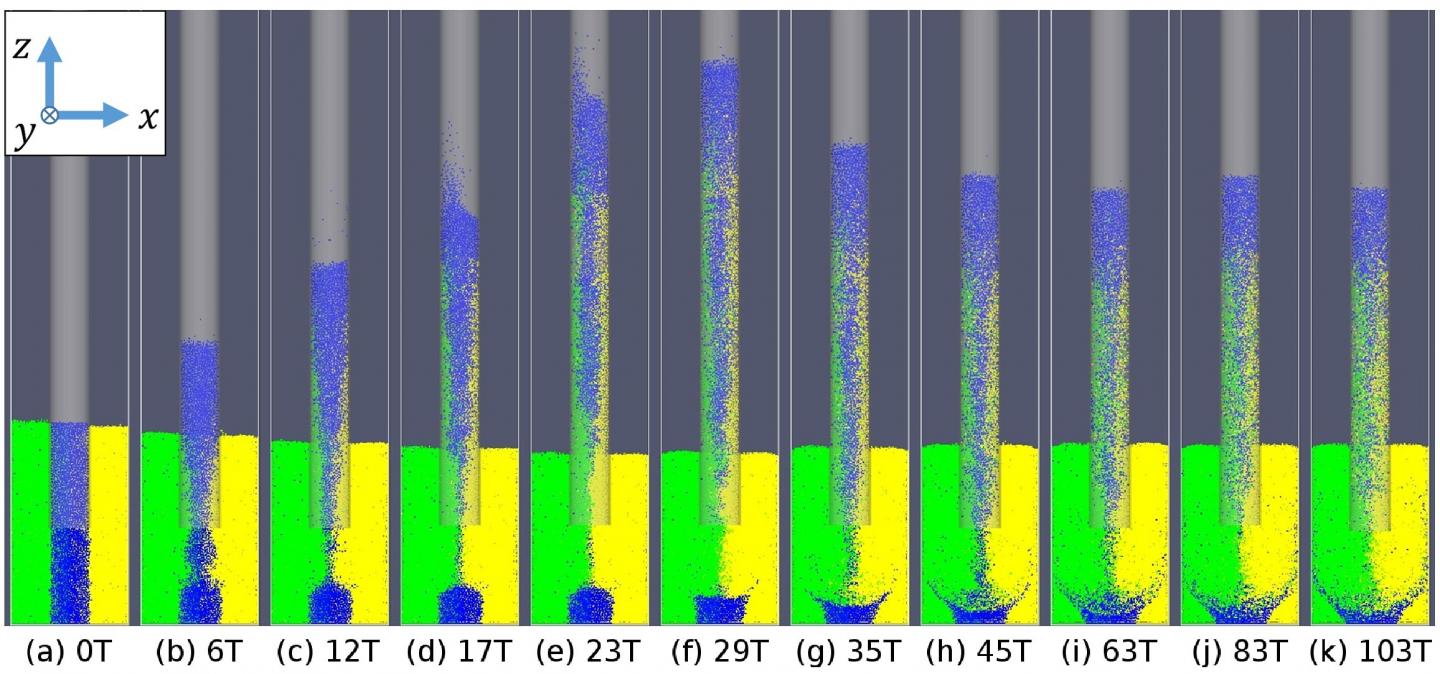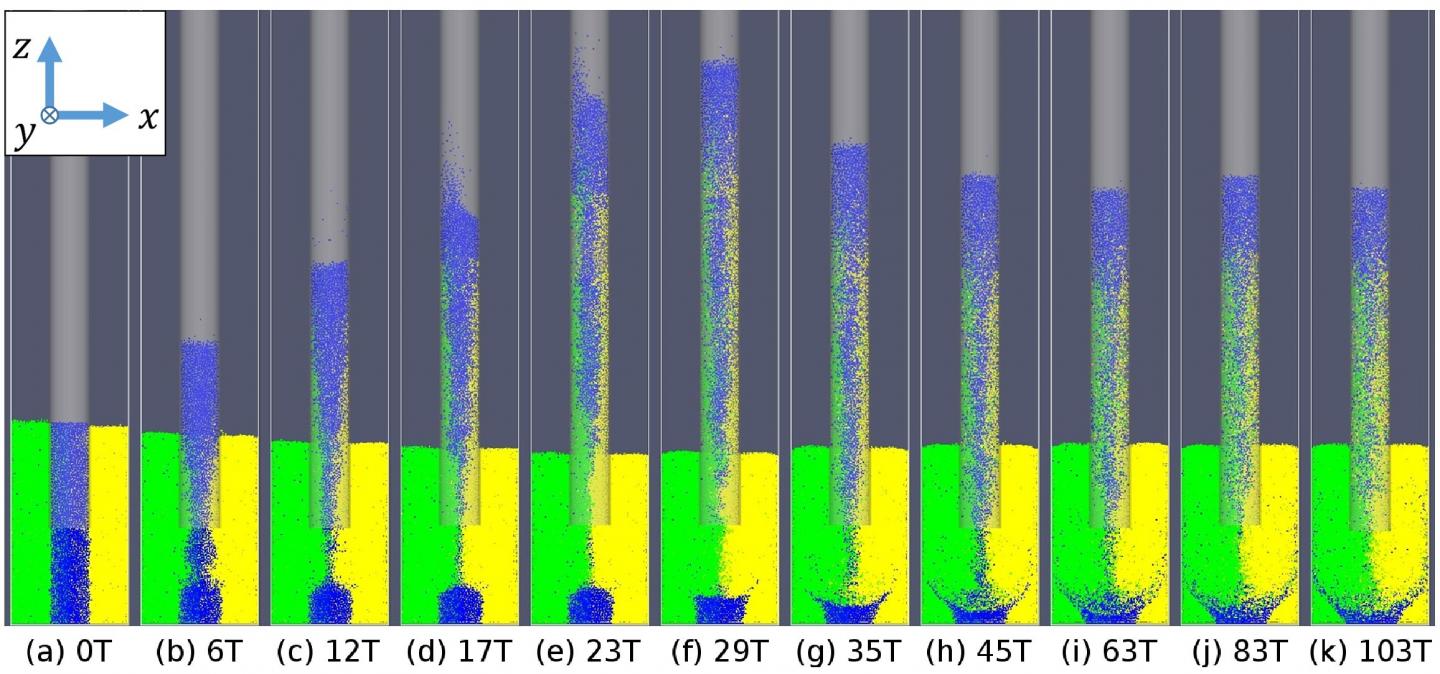
Credit: Fengxian Fan, Eric Parteli, Thorsten Pöschel
Dipping a tube into a container filled with water will make the water rise in the tube. This phenomenon is called liquid capillarity. It is responsible for many natural and technical processes, for example the water absorption of trees, ink rising in a fountain pen, and sponges absorbing dishwater. But what happens if the tube is dipped into a container filled not with water but with sand? The answer is – nothing. However, if the tube is shaken up and down, the sand will also begin to rise. Scientists have now discovered the mechanism behind this effect, the so-called granular capillary effect.
Dr Eric J. R. Parteli from the University of Cologne's Department of Geosciences, Professor Fengxian Fan from the University of Shanghai for Science and Technology, and Professor Thorsten Pöschel from Friedrich-Alexander University Erlangen-Nürnberg have now published the results of their study 'Origin of Granular Capillarity Revealed by Particle-Based Simulations' in the Physical Review Letters.
Liquid capillarity results from the interplay of different molecular forces: the attraction between the liquid molecules keeps it together while the attraction between molecules and tube drives the liquid upward. This explanation precludes the occurrence of capillarity for sand because sand grains are so much bigger than their constituent molecules that inter-molecular forces can be safely neglected compared to gravity and grain inertia. However, surprisingly, granular capillarity has been observed in laboratory experiments in which the granular material was subjected to a tiny vertical vibration of a few grain diameters in amplitude and a frequency of just a few Hertz. The origin of this granular capillary effect was a long-standing mystery the international team of scientists succeed in unveiling.
They investigated the problem using a particle-based numerical simulation method called Discrete Element Method. In this method, the trajectory of every single grain is calculated by numerically solving Newton's equations of translational and rotational motion due to the forces that act on each grain. By means of such a numerical experiment, it is thus possible to track the trajectory and velocity of all grains, including those grains that are deep within the granular bulk, which are difficult to assess in the laboratory.
The research team observed in their simulations that what makes the sand column ascend in the tube is a convective motion of the sand grains within the recipient that is inherent to granular materials under vertical vibrations. This convective flux causes lateral mass transport within the vibrating granular packing, which leads to an upward pressure on the base of the granular column in the tube, which is why the column ascends. The scientists found that how fast and far the column rises depends on the tube size. Remarkably, the simulations showed that the height of the granular meniscus (the capillary height that the granular column reaches after a long time) is proportional to the inverse of the tube size. This is exactly the same behaviour as for liquid capillarity, although the driving forces in the two systems are so much different.
The physicists showed in their study that the same capillary effect can be produced by shaking the tube instead of the container, which opens up promising applications in the handling and transportation sectors. For example, particles could be pumped up from very large containers just by using granular capillarity. They are now studying the process in more depth to understand the effect of system and particle geometry.
###
Publication: https://journals.aps.org/prl/abstract/10.1103/PhysRevLett.118.218001
Media Contact
Dr. Eric Parteli
[email protected]
49-221-470-7480
@UniCologne
http://www.uni-koeln.de
############
Story Source: Materials provided by Scienmag





